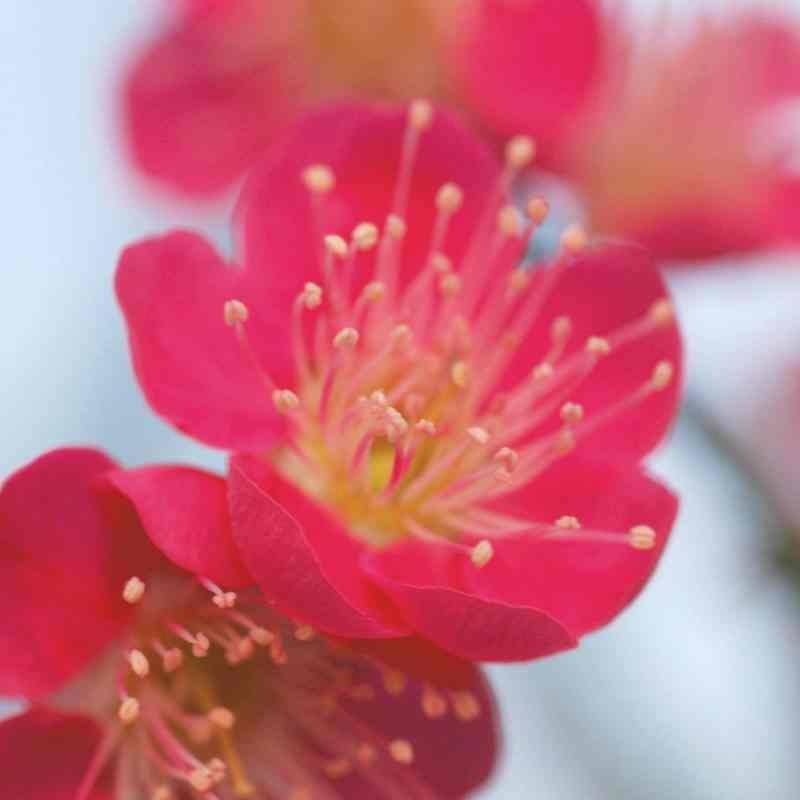The fruits of the original fruiting Chinese forms were eaten, usually having been preserved first by drying or salting, and then eaten as a vegetable.
The Japanese Apricot is perfectly hardy and is happy on a range of soils from sandy situations to heavier clay soils. It will tolerate light shade but tends to flower best in a a position with plenty of sun.
In some parts of the country, this plant can suffer from peach leaf curl which is a fungal disease that causes some deformation of the leaves. This can be treated by spraying with a systemic fungicide in autumn just before leaf fall and twice, two weeks apart, in late January and early February.
We suggest that in a typical garden it is planted by a path or in a lawn, somewhere sheltered from where the fragrance lingers and is best appreciated. Our Prunus mume 'Beni-Chidori' is planted in a cold exposed part of the arboretum and while it looks lovely when in flower, the delightful flower scent tends to be blown away on gusty spring days.

Comments
Post a Comment